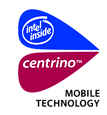Tech
Beware the Centrino brand
Every time I see the brand name Centrino pop up in the news, my blood begins to boil. Here's why.


When you see Centrino branding in public hotspots such as hotels and airports, the message is that if you have a Centrino system, it will work here. Although Intel would never say it, subtly, this "compatibility message" implies that if you don't have a Centrino system, you might not be able to connect. As I've said before, this? is, of course, untrue. All you need is a system with a Wi-Fi radio in it. (Ones that support the 802.11b flavor of Wi-Fi will almost always do.)
Though I haven't heard the pitch recently (and I hope I don't), Intel has also, in the past, implied that Centrino is what's needed to?eke out the most battery life from a Wi-Fi-based notebook. This "power efficiency message" is also untrue. Intel has never offered proof that, in order to that get great battery life, a notebook must have all of the parts that qualify a notebook as a Centrino notebook: the Pentium-M processor, the processor's surrounding cast of characters called the chipset, and Intel's radio. As it turns out, the culprits that are responsible for the great battery life are just the processor and the chipset. If a notebook has the processor and the chipset, but not the Intel radio, it cannot display the Centrino brand.
These two messages -- the compatibility message and the power efficiency message -- are what builds demand for the Centrino package (the processor, the chipset, and the radio). Just as with the old "Intel Inside" campaign, which served the company quite well, Intel wants you to demand a Centrino system instead of a Wi-Fi system on the basis that you'll get the best battery life and the most compatability out of such a system. Much to the chagrin of companies like AMD, Atheros, and Broadcom that want to see their parts inside all of those notebook computers, this has been effective at putting leverage on notebook manufacturers to put the entire Centrino package in their gear.
But not all notebook makers are on board with Centrino to the exclusion of other options. Dell, for example, gives buyers the option of going with the complete Centrino bundle, or substituting Dell's Wireless solution. Why would someone do this? According to the online configurators on Dell's Web site, it saves you $19, which means that, at Dell's volume, it saves Dell (and probably other notebook manufacturers) a ton. In a weird twist of fate, perhaps you can thank Intel's Centrino campaign for this savings. According to a report on Netstumbler, "Intel drove demand for Wi-Fi with its Centrino marketing campaign, but it also has helped push prices lower." Maybe it's reading between the lines, but lowering prices may be the only way to compete with the Centrino campaign. Short term, the benefit of the Centrino "pressure" is that we all pay less. But long term, if competitors get squeezed out by cut-throat pricing, we could end up paying more.